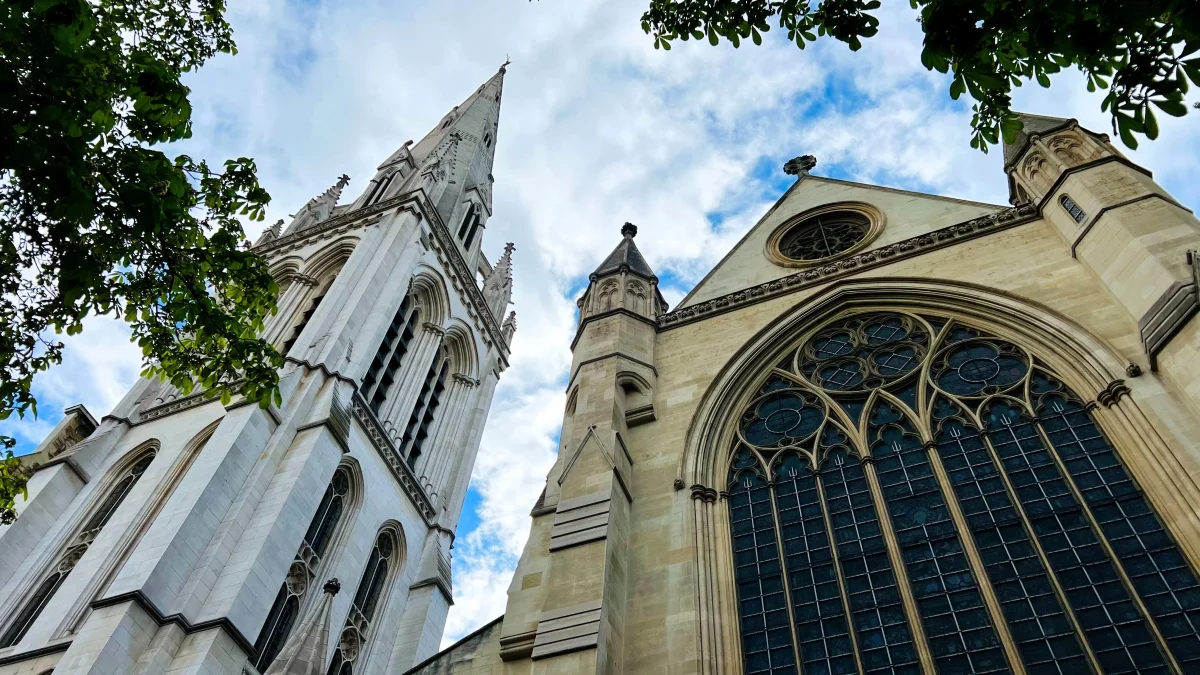American Church in Paris
Details
9 AM–12:30 PM, 1:30–10 PM Open
48.8621° N, 2.3066° E
The American Church in Paris, founded in 1814, stands as a beacon of spiritual significance with a rich historical legacy. Its Gothic Revival architecture, a masterpiece designed by Allison & Allison, seamlessly blends tradition and innovation.
The Church boasts a stunning blend of architectural elements both inside and out. Its exterior showcases pointed arches, decorative stone carvings, and a soaring spire that graces the Parisian skyline. The façade’s warm, honey-colored stone adds to the church’s visual appeal.
Step inside to discover a serene and inviting interior. The nave is adorned with beautiful stained glass windows. They bathe the space in colorful hues when sunlight pours through. The church’s interior design fosters a sense of community and spiritual reflection, creating a peaceful retreat in the heart of the bustling city.
The church is a symbol of enduring faith. It has witnessed pivotal moments in history, including its role as a sanctuary for American soldiers during World War I. The intricate stained glass windows, portraying American history, add a unique charm to its ambiance. This iconic landmark, located at 65 Quai d’Orsay, invites visitors to explore the intersection of spirituality and history in the heart of Paris.
How to Get There
Easily accessible at 65 Quai d’Orsay, the church welcomes visitors to experience its historical and architectural treasures.
By bus: [63]
Admission is free.
Interesting fact
During World War I, the Church played a vital role as a center for American soldiers stationed in France, providing a familiar place for worship and community. The church’s stained glass windows serve as captivating storytellers, depicting episodes from American history. These vibrant artworks not only add aesthetic beauty to the interior. They also contribute to a unique historical narrative within the church’s sacred space. The windows stand as a testament to the enduring connection between the temple and significant events in the broader context of American history.




